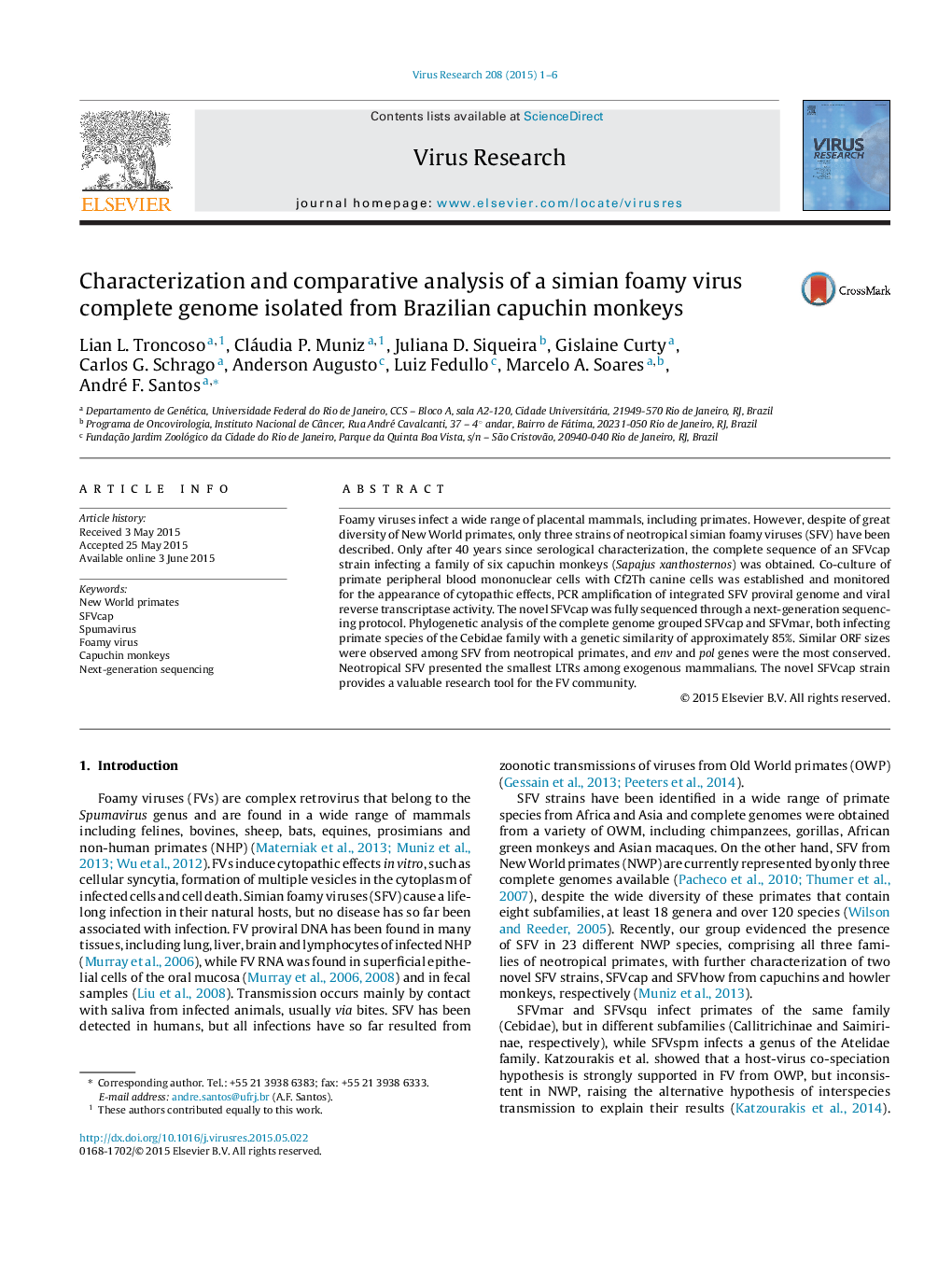| Article ID | Journal | Published Year | Pages | File Type |
|---|---|---|---|---|
| 3428107 | Virus Research | 2015 | 6 Pages |
•We obtained SFV isolates from co-culture of Cf2Th/PBMC from a family of capuchins.•Viral infection was monitored for cytopathic effects, PCR and viral RT activity.•The genome of a new strain (SFVcap) was obtained through NGS.•NWP SFVs corroborate host-virus co-speciation hypothesis, while SFVsqu violates it.•NWP SFVs have the smallest LTR while OWP SFV have the largest among primates.
Foamy viruses infect a wide range of placental mammals, including primates. However, despite of great diversity of New World primates, only three strains of neotropical simian foamy viruses (SFV) have been described. Only after 40 years since serological characterization, the complete sequence of an SFVcap strain infecting a family of six capuchin monkeys (Sapajus xanthosternos) was obtained. Co-culture of primate peripheral blood mononuclear cells with Cf2Th canine cells was established and monitored for the appearance of cytopathic effects, PCR amplification of integrated SFV proviral genome and viral reverse transcriptase activity. The novel SFVcap was fully sequenced through a next-generation sequencing protocol. Phylogenetic analysis of the complete genome grouped SFVcap and SFVmar, both infecting primate species of the Cebidae family with a genetic similarity of approximately 85%. Similar ORF sizes were observed among SFV from neotropical primates, and env and pol genes were the most conserved. Neotropical SFV presented the smallest LTRs among exogenous mammalians. The novel SFVcap strain provides a valuable research tool for the FV community.
